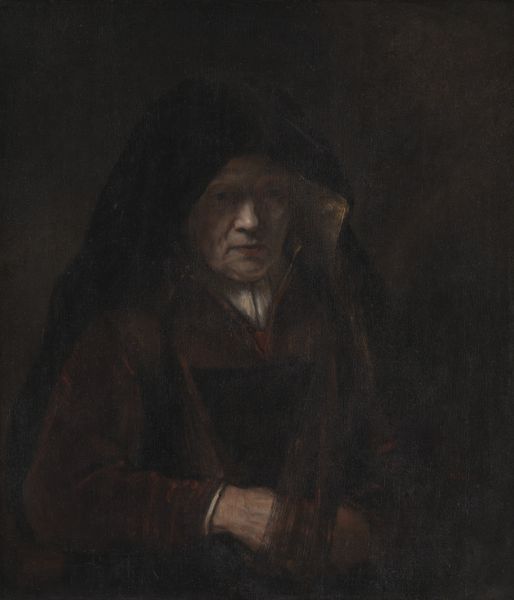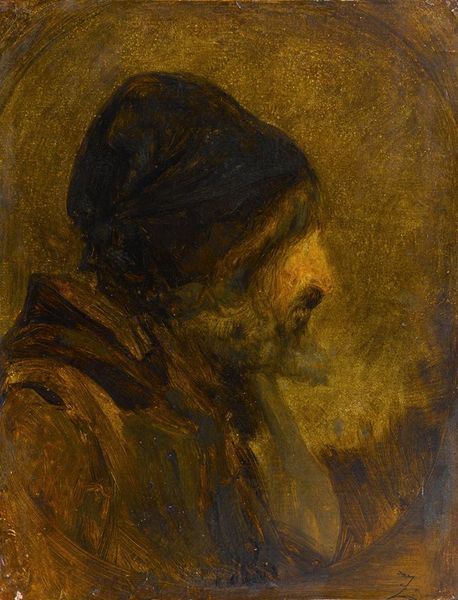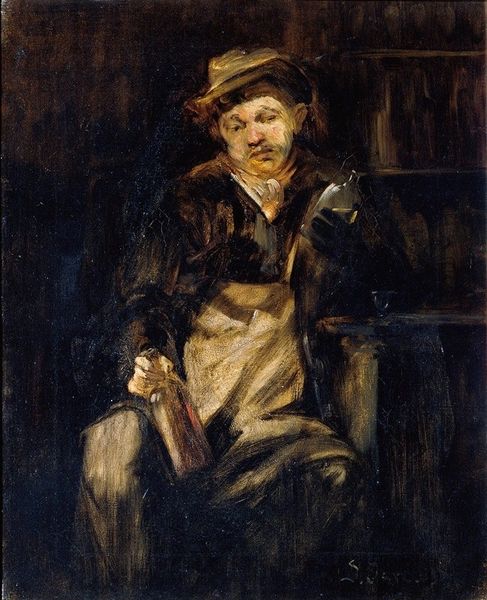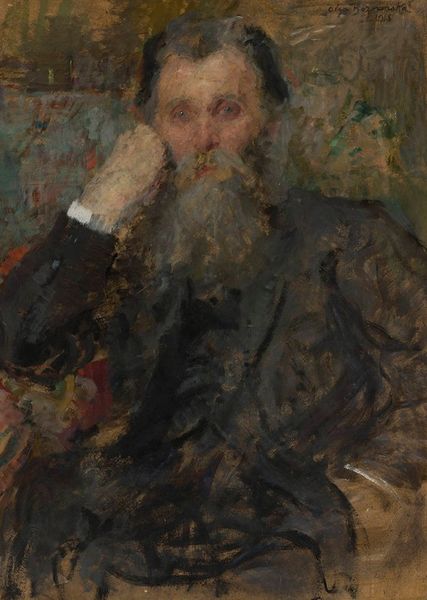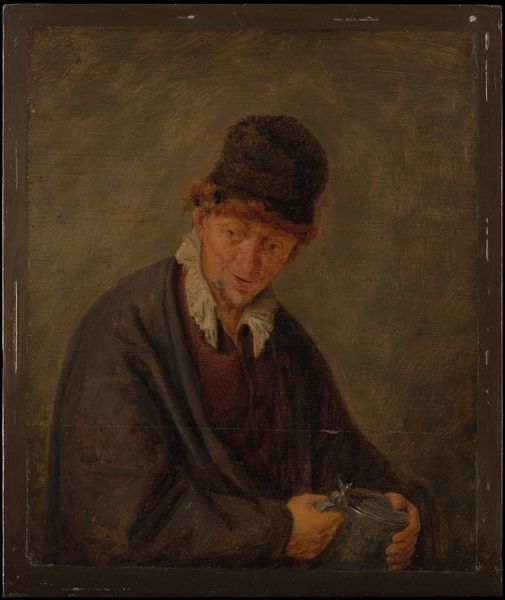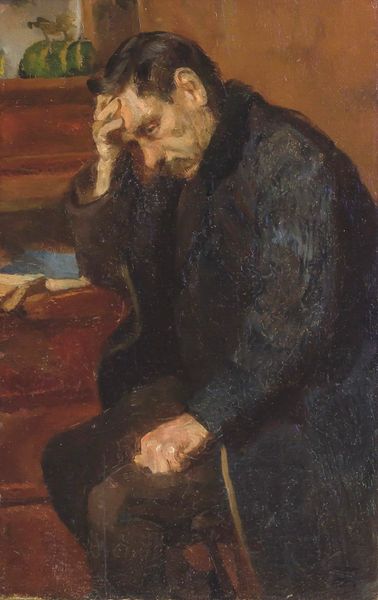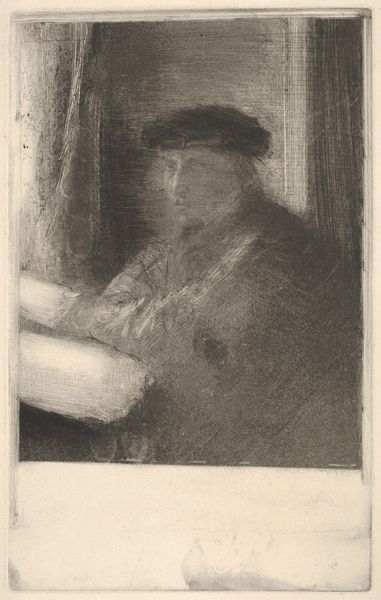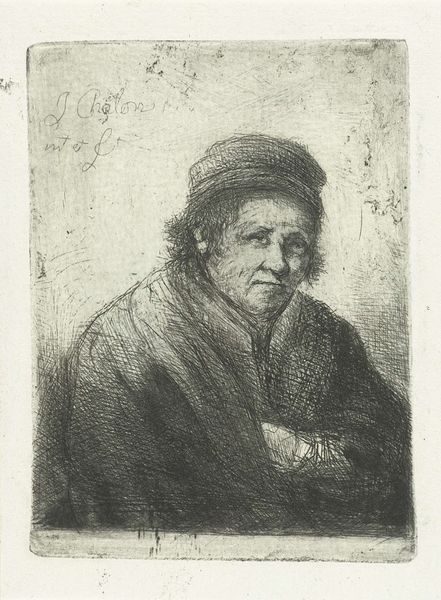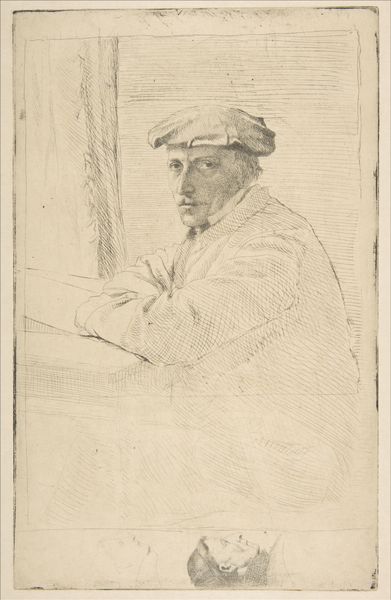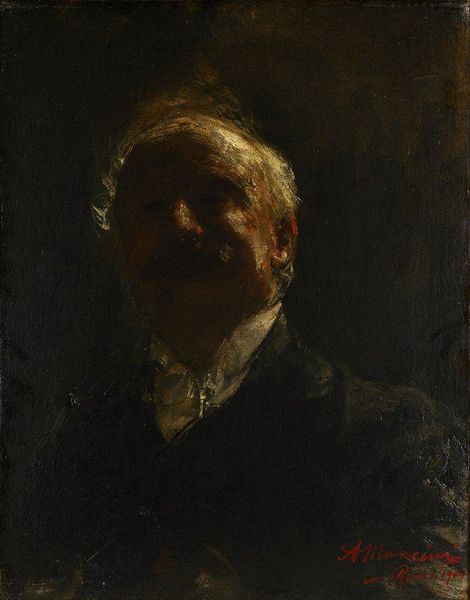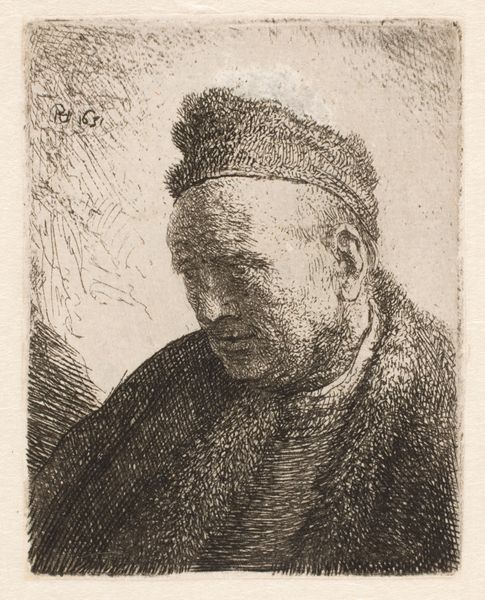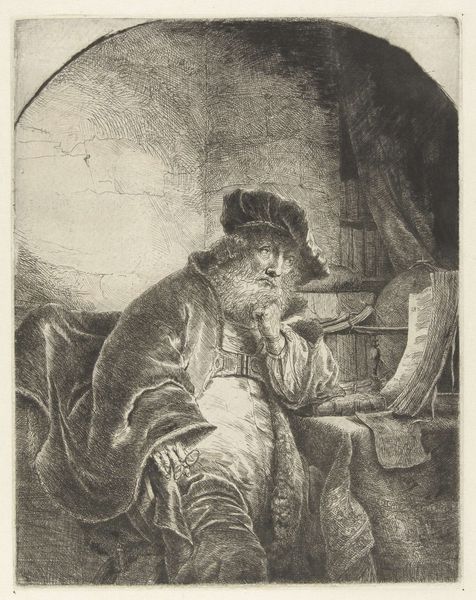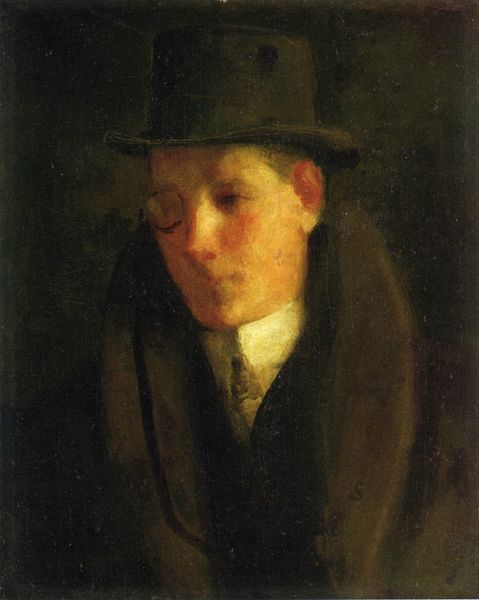
oil-paint
#
portrait
#
oil-paint
#
charcoal drawing
#
oil painting
#
portrait head and shoulder
#
portrait drawing
#
history-painting
Dimensions: overall: 28.3 x 22.5 cm (11 1/8 x 8 7/8 in.) framed: 44.5 x 39.4 x 4.4 cm (17 1/2 x 15 1/2 x 1 3/4 in.)
Copyright: National Gallery of Art: CC0 1.0
Curator: Let's consider this artwork by Alphonse Legros titled "Memory Copy of Holbein's Erasmus". Editor: The mood is immediately striking. It feels introspective, almost melancholic, defined by its restrained palette and somber tone. Curator: Indeed. Legros here references Holbein’s iconic portrait. What interests me is the stark contrast between the original and this memory copy; Legros relies on oil paint and drawing to express something about his artistic forefathers. The geometric composition focuses primarily on the contrast between light and shadow. Editor: The very act of copying from memory is loaded. It signifies an attempt to connect with, perhaps even inhabit, the intellectual and creative space of Erasmus and Holbein themselves. But in this case, the lack of specific contextual information surrounding Legros's work invites contemplation on artistic lineage and influence, and what happens when they collide. It may also tell us how canonical figures relate to a contemporary and evolving societal context. Curator: Agreed. Observe Legros’ rendering of the figure: simplified forms and subdued colors create an air of contemplative humility, focusing instead on essential forms, like light falling across his subject’s face. This abstraction, this pulling away from photorealism, directs our attention to the fundamental structure of the piece. Editor: I see that too. However, I would also point out the loaded nature of portraiture itself: who is represented, who isn’t, and the implications therein. What does it mean that Legros chose to represent such a specific lineage? Who did it exclude? How would it affect people from marginalized backgrounds viewing it? Curator: A fair question. I wonder if that means he engaged in his own quiet critique by reducing details. Either way, both texture and the structure guide me to focus on form itself. Editor: A compelling perspective, focusing on form while not necessarily being unmindful of art history or power dynamics at large. Curator: Perhaps Legros wants us to feel the weight of influence—the burden of art history itself!
Comments
No comments
Be the first to comment and join the conversation on the ultimate creative platform.
